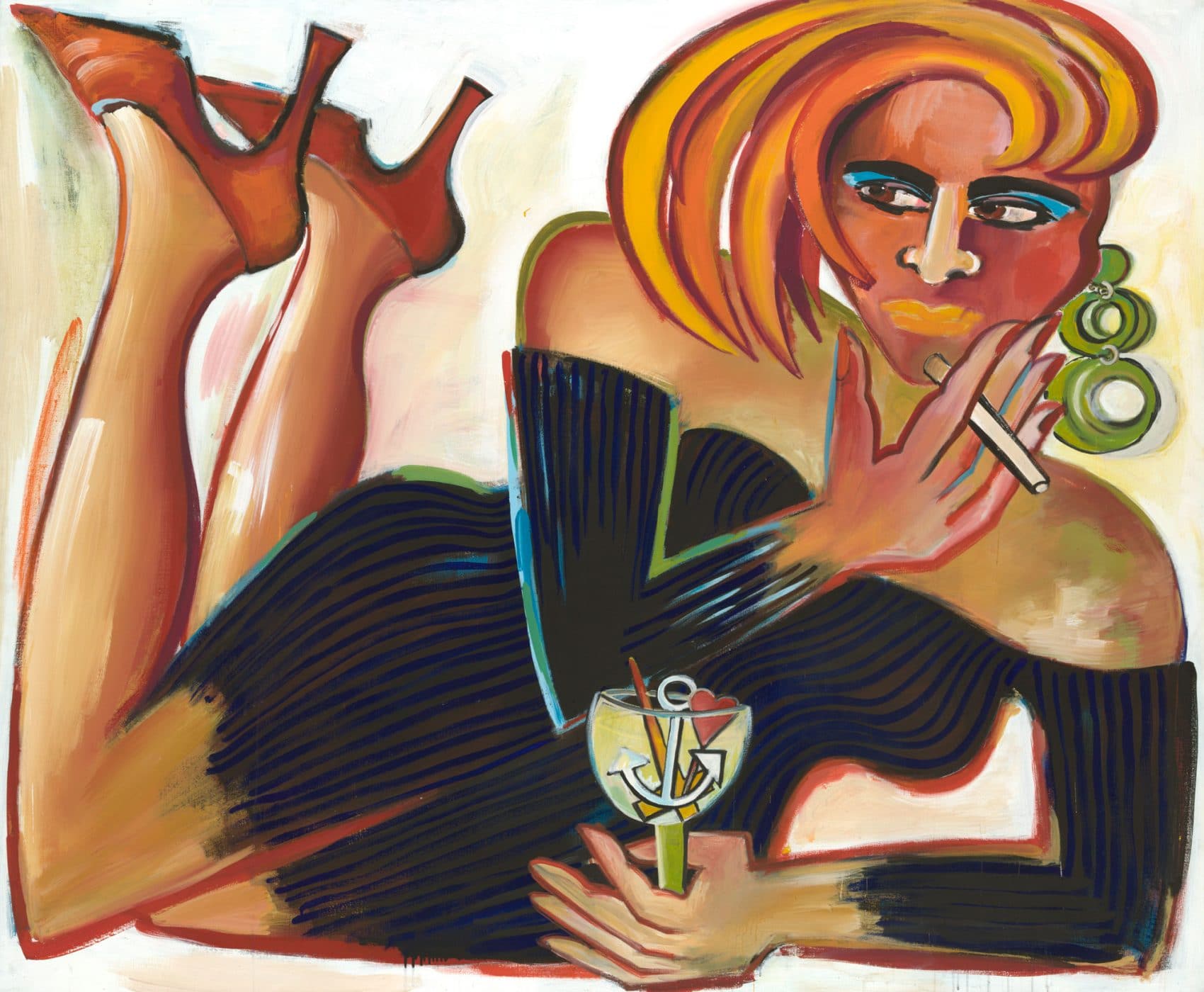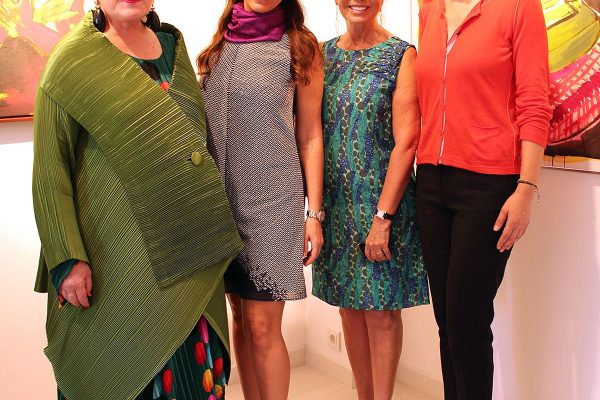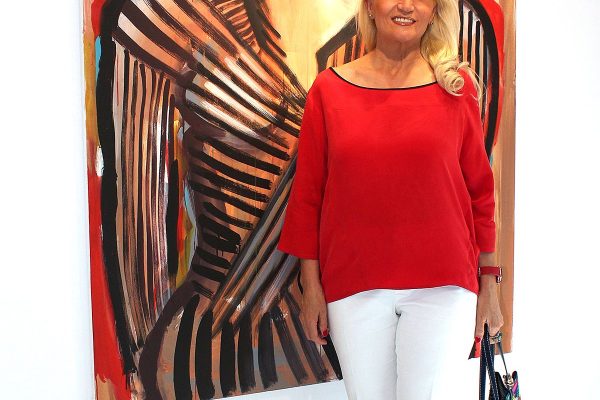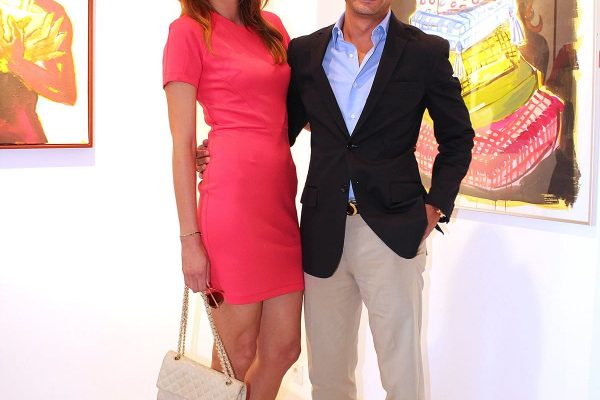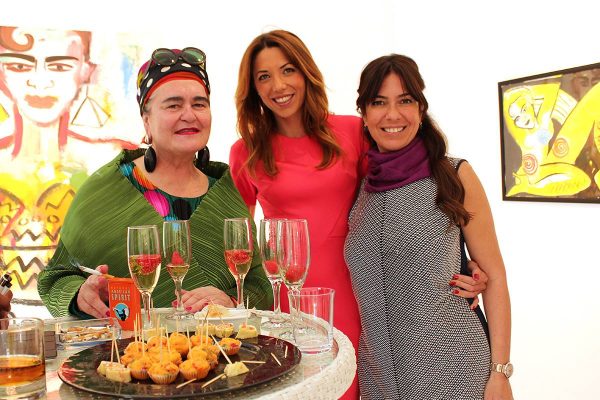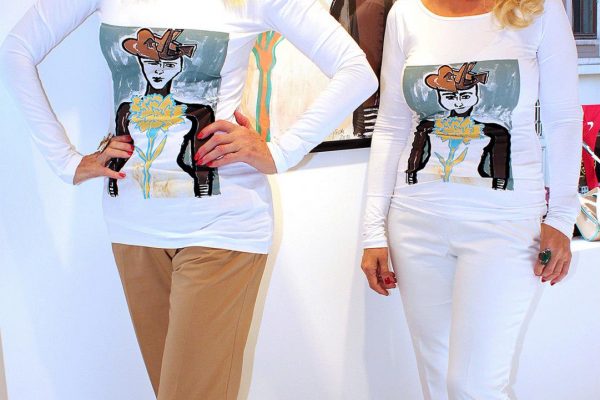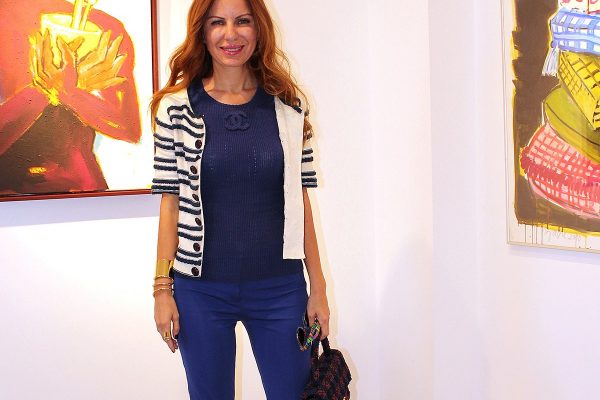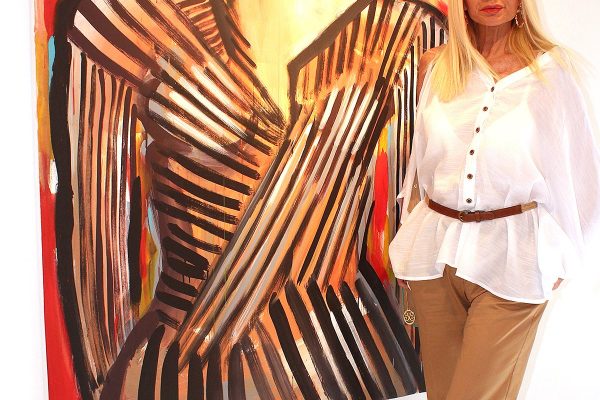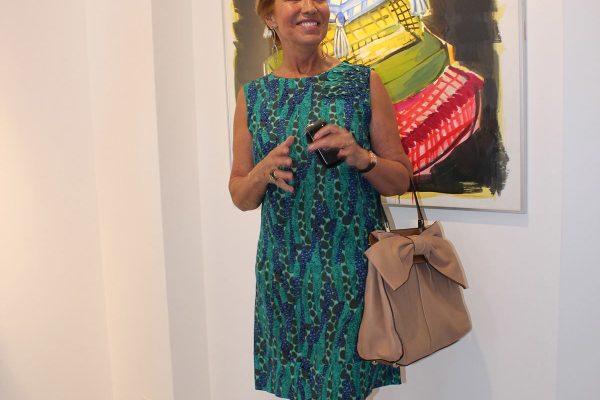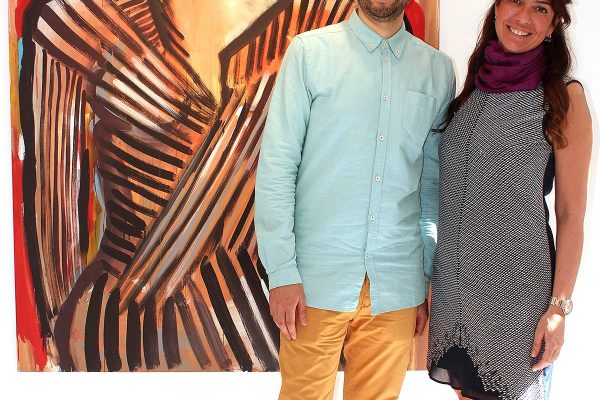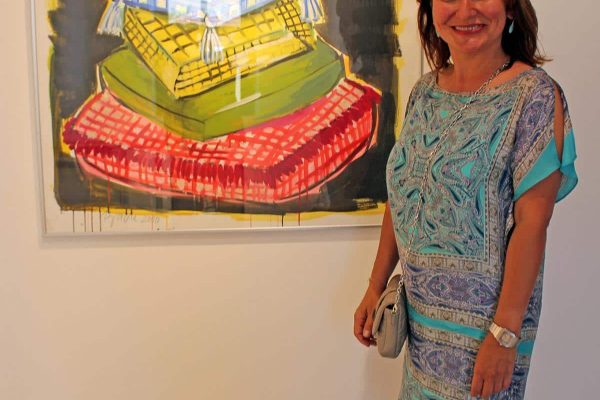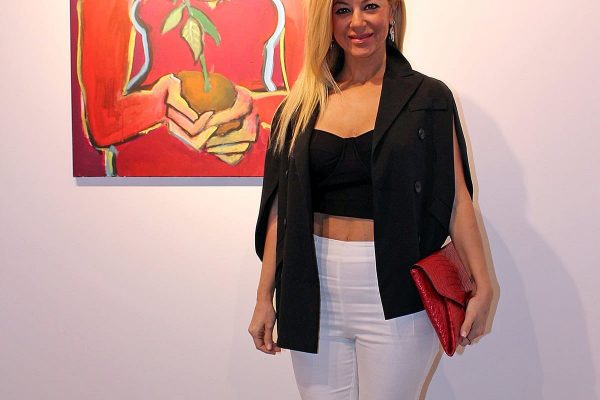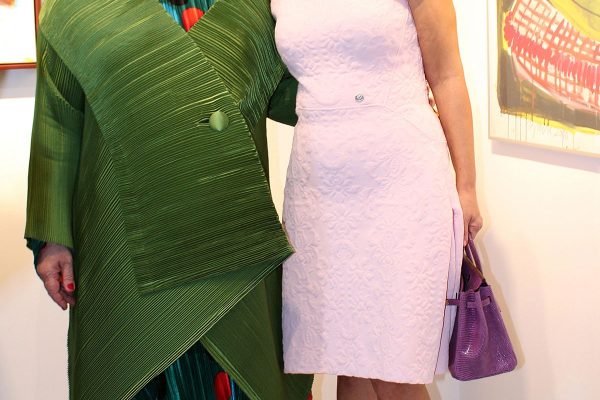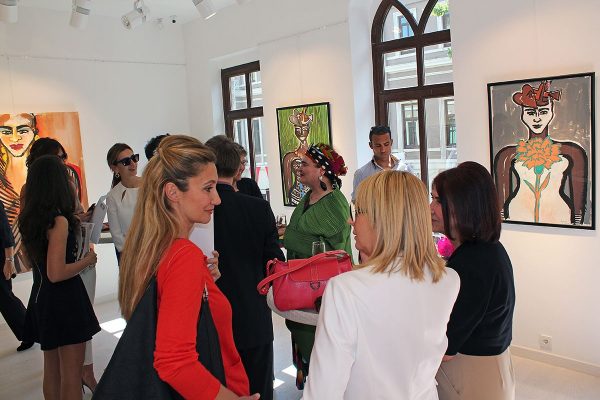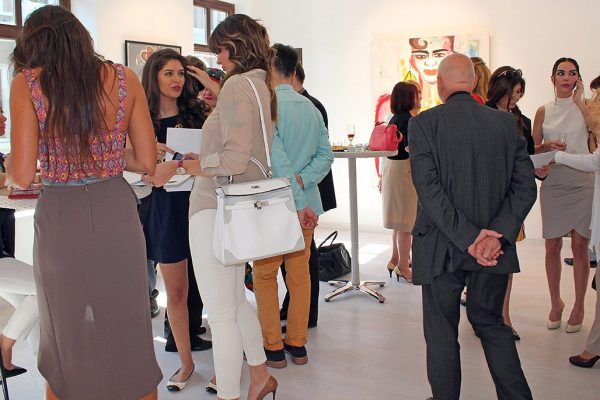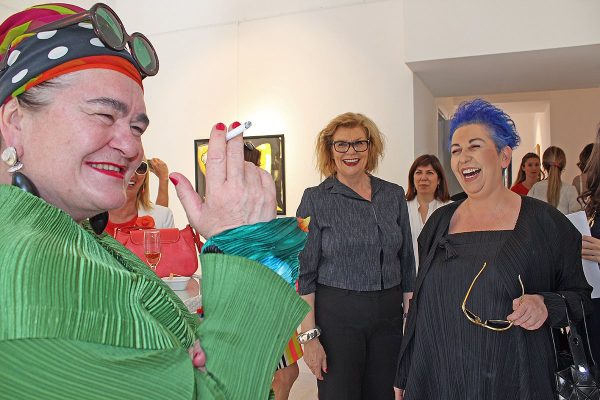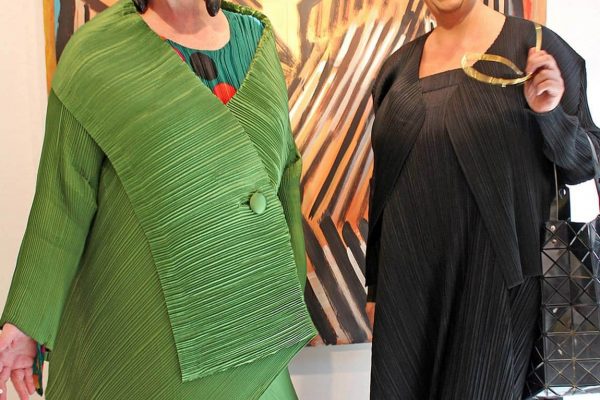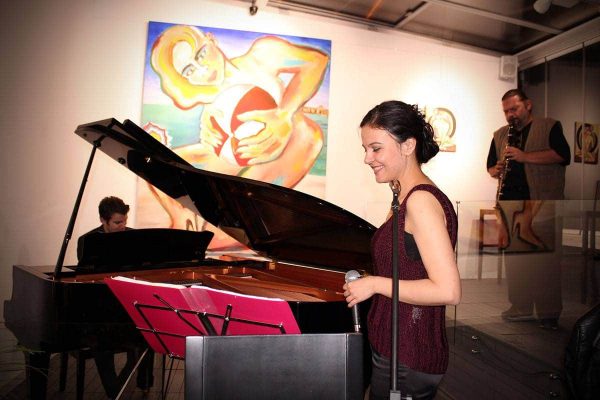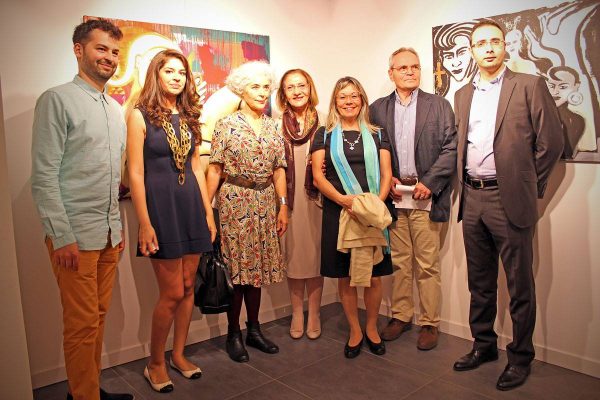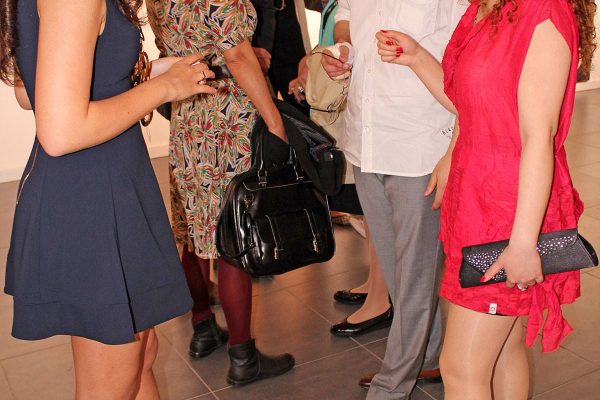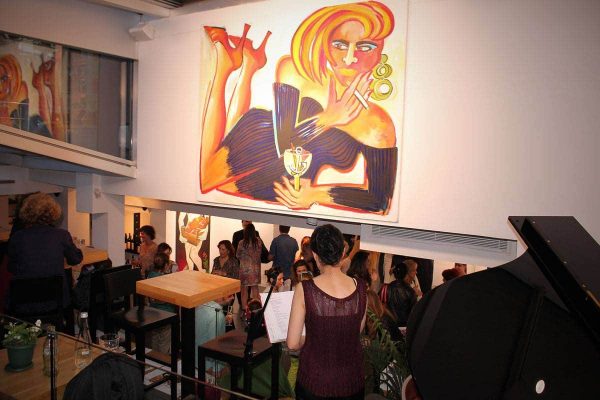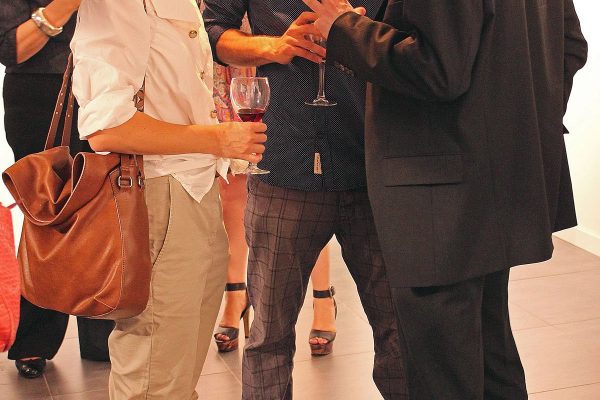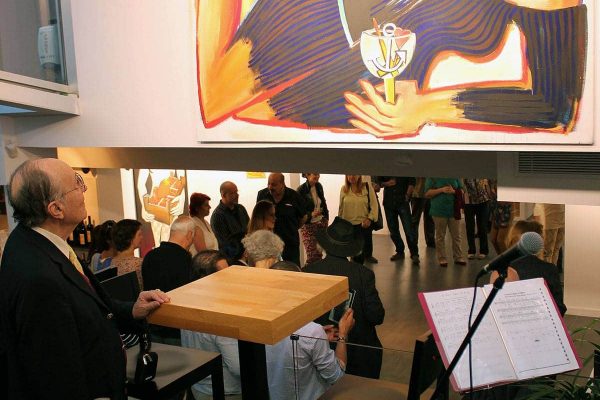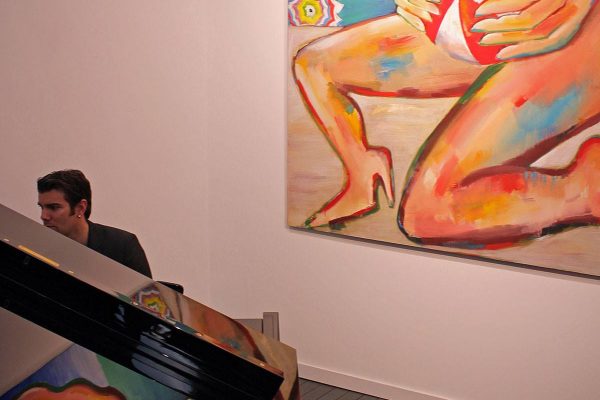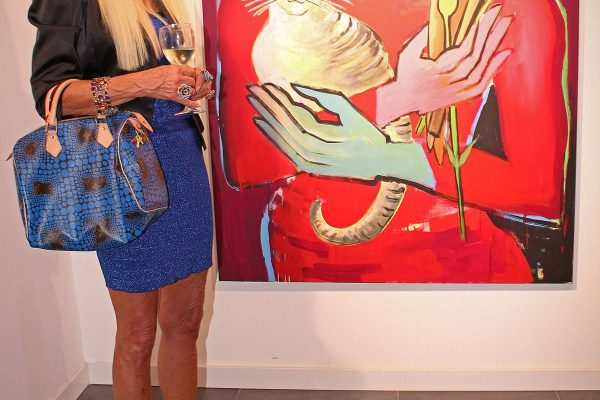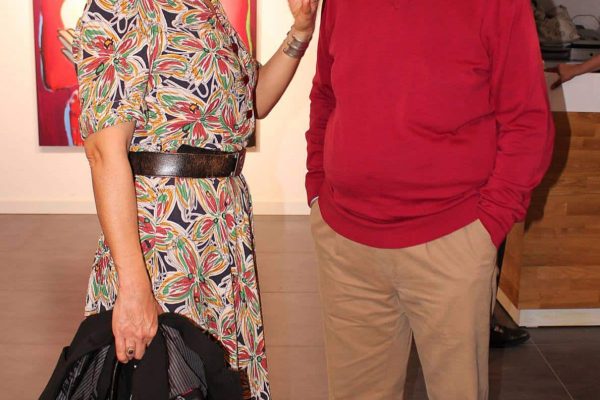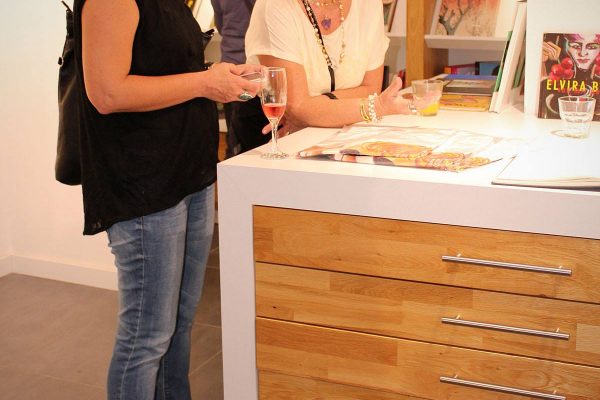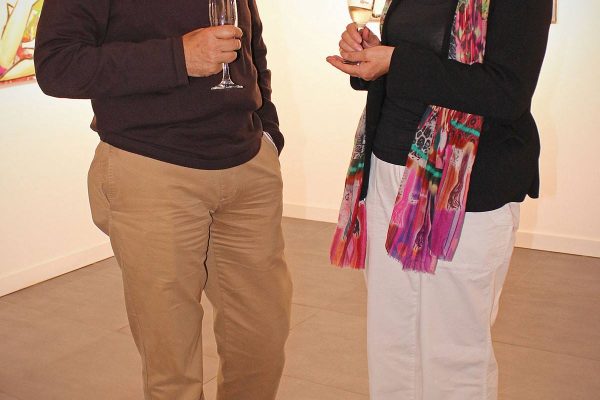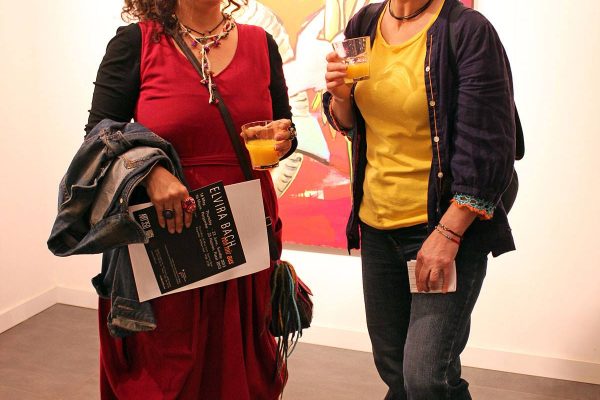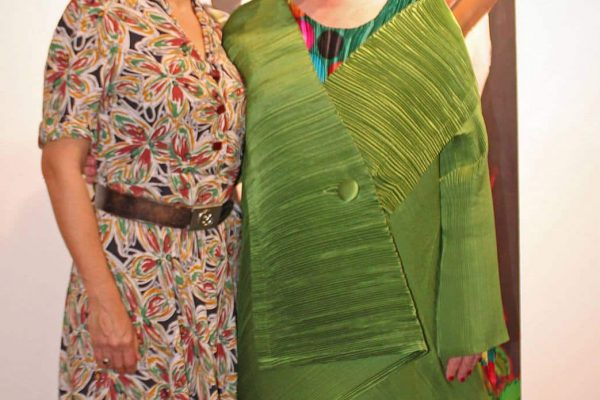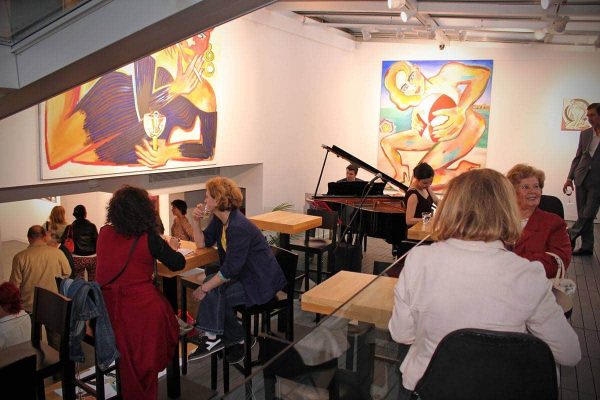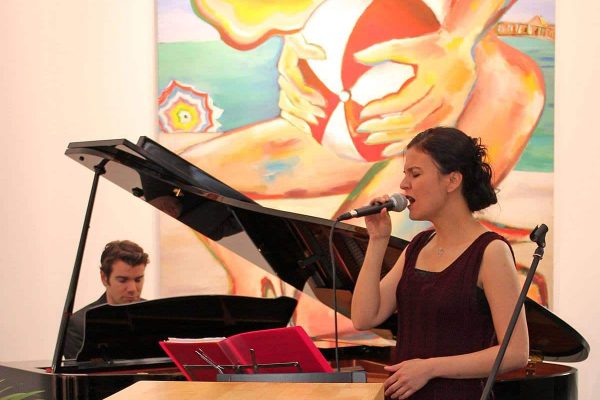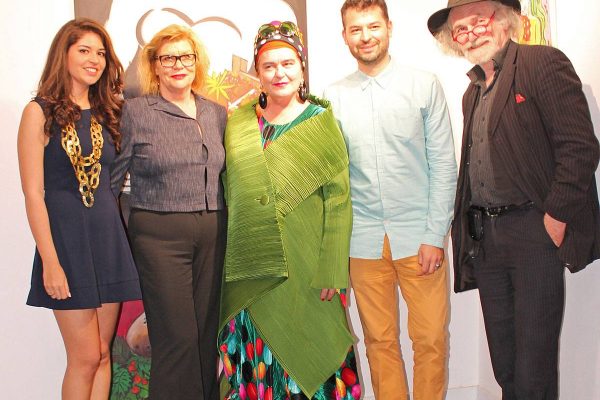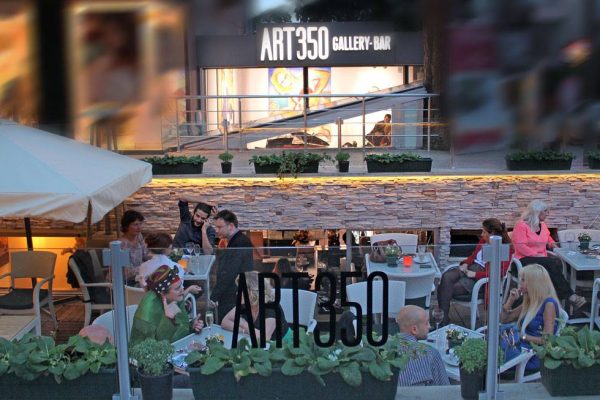Elvira Bach attended the Staatliche Glasfachschule Hadamar from 1967 to 1970. She moved to Berlin two years later where she studied painting under Hann Trier at the Hochschule der Künste. She financed her studies by working as a property master, a foyer lady and a prompter at the Schaubühne am Halleschen Ufer. In 1982 Bach spent several months as an Artist in Residence in Santo Domingo in the Dominican Republic, an experience that inspired and influenced her work considerably. Just 29 years old, Bach was invited in the same year to exhibit at the documenta VII. Numerous exhibitions at museums and art societies followed. Instead of Rationality, Bach expresses subjective themes in a fleetingly vigorous, energetic, even aggressive pictorial language, which is expressed in a sensually bright palette and clearly defined angular forms. The recurring subject is the woman in her sex-determined existence, usually with similar features – in fact it’s Elvira Bach herself. She began painting self-portraits in 1978 – often disguised as still-lifes with collections of utensils and accessories with which she defines herself as a woman. The snake became an important feature in her work during the first half of the 1980s. Erotic associations increasingly determined her work. This strongly sensual energy was transformed around the end of the 1980s towards a more reserved style. “I know that I have lived many things to the full”, said Elvira Bach in retrospect – for her the necessary experience in order to continue her work as an artist in a more relaxed manner and within a new area.
“The first impression I had of these paintings was the palpable confidence with which they were executed. Evidently, Ms. Bach had been working on each figurative line persistently to render them, finally, with a few basic and well-defined brush strokes and achieving a remarkable likeness to herself in each painting. These figurative paintings are celebrating an affectionate relationship between humans and flora, fauna, and fruits (therefore, nature as a whole).
Ms. Bach utilizes three basic symbols to express her lifelong orientation towards her universe–in Ferhat Yeter’s words: the Cross for faith, the heart for love, and the ship’s anchor for hope; these symbols are drawn with assurance and painted densly with strong colours to express her enduring faith in what they represent. In one of her paintings she is celebrating a union between black and white people from which her full figure emerges in heavenly-pink announcing harmony and happiness, a must for all human-beings.
She uses Fauvism, Minimalizm, and Expressionizm to render her paintings very energetic and easy to assimilate. Her facial expressions are simplified to a few but remarkably representative lines which easily identify her serene and friendly countenance. She is the only model of all these figurative paintings which are celebrating life as a whole with enthusiasm and humor.
The Gallery ART 350 managers Binnaz and Ferhat Yeter are sister and brother; they are very perceptive and gracious hosts. Ferhat Yeter personally went to Germany to contact Ms. Bach, select the paintings and arrange this remarkable and rare exhibition, rendering İstanbul an international arts-activity domain for contemporary high-art artists and art-lovers. I congradulate them for their remarkable efforts.
The opening of the exhibition had the character of an international event, thanks to the patronage of Dr. Wolke (The Consul General of The Republic of Germany, İstanbul) and the Gallery ART 350 owner Ms. Anna Laudel; Ms. Elvira Bach was personally present as a guest of honour, and many select art-lovers were present; even a singer and a pianist have contributed their talents to this unique artistic exhibition-and- celebration. I should also indicate that this exhibition is an unusual opportunity for collectioners to further enrich their cherished holdings.”
Sezer Aykan
Master of Arts Criticism, MAC
Master of Visual Arts Management, MVAM

